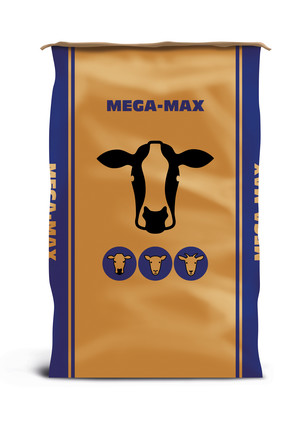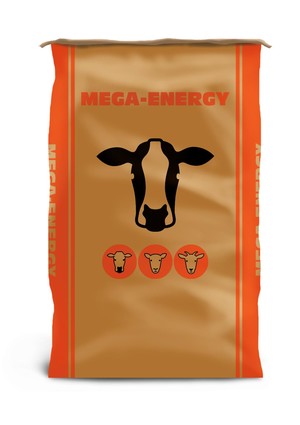Rumen Bypass Fat
Home/
Rumen Bypass Fat
Rumen Bypass Fat
Rumen bypass fats, also known as rumen protected fats or bypass fats, are specialized dietary fats designed to resist breakdown in the rumen of ruminant animals like cows, sheep, and goats. Bypass fat are typically added to the animal’s diet as a feed supplement. They can be incorporated into total mixed rations (TMR) or fed separately depending on the specific nutritional needs of the animals.
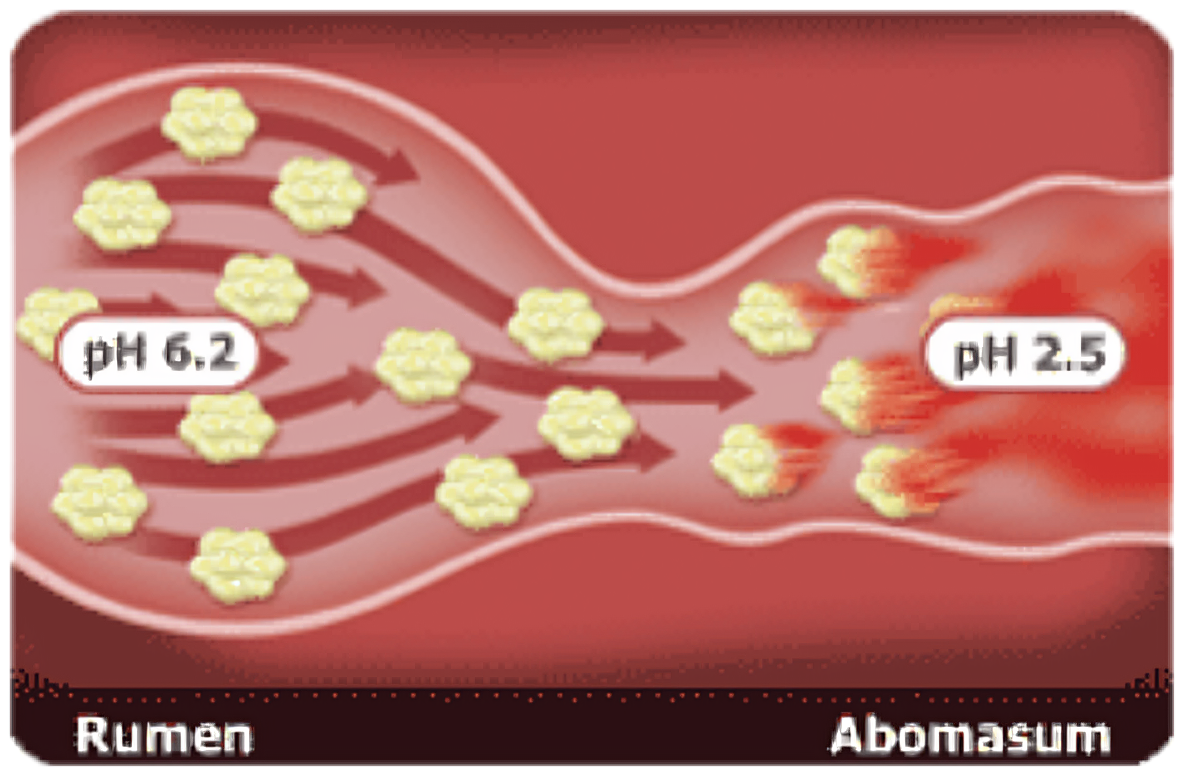

ME 33.3 MJ/kg DM
Typical Analysis
The calcium protects the fat from breaking down in the rumen, so unlike many other fats there is no negative effect on rumen function. The fat is then digested in the acidic lower gut, with near 100% efficiency.The cow then uses the energy in Megalac for milk production and performance. Megalac has the highest independently measured net energy value of any feedstuff.
A research product of Volac UK, Manufactured in Malaysia, Megalac meets GMP+ B2 standard of GMP+ International.
Product Benefits
Trial work by Drackley (1999) showed Megalac to be highly digestible (96%), while studies at the United States Department of Agriculture (1991) showed Megalac to have the highest measured net energy of lactation (NEL) value (27.3MJ/kg DM) of any feed ingredient tested, meaning that very little energy is “lost”.

Improved milk yield
Improved body condition score and health
Improved fertility
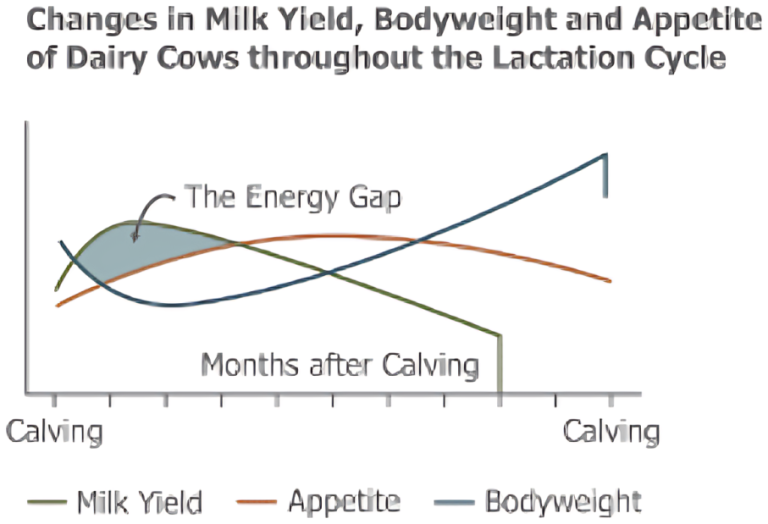
Why Feed Megalac?
Energy Losses Energy is extremely important post calving when peak milk production coincides with low appetite. This means there is a fine balance to be found between intake, milk production, weight loss and body condition. Feeding Megalac helps to fill the energy gap and meet the energy demands of high yielding dairy cows.
Work at Myerscough College showed that cows fed 600g of Megalac per day maintained higher body condition scores at turnout to spring grass than those fed a lower energy diet (Goodman et al, 2003).
Megalac Increases Milk Yield
Trial work on farms and at universities and research centres over the last twenty-five years has provided practical evidence to prove that Megalac increases milk yield, with 18 studies showing an average increase of 2.3 litres per cow per day.
Work at the University of Reading with high yielding dairy cows reported an average increase of 4.3 litres/day over the first 17 weeks of lactation when Megalac was included in the diet.
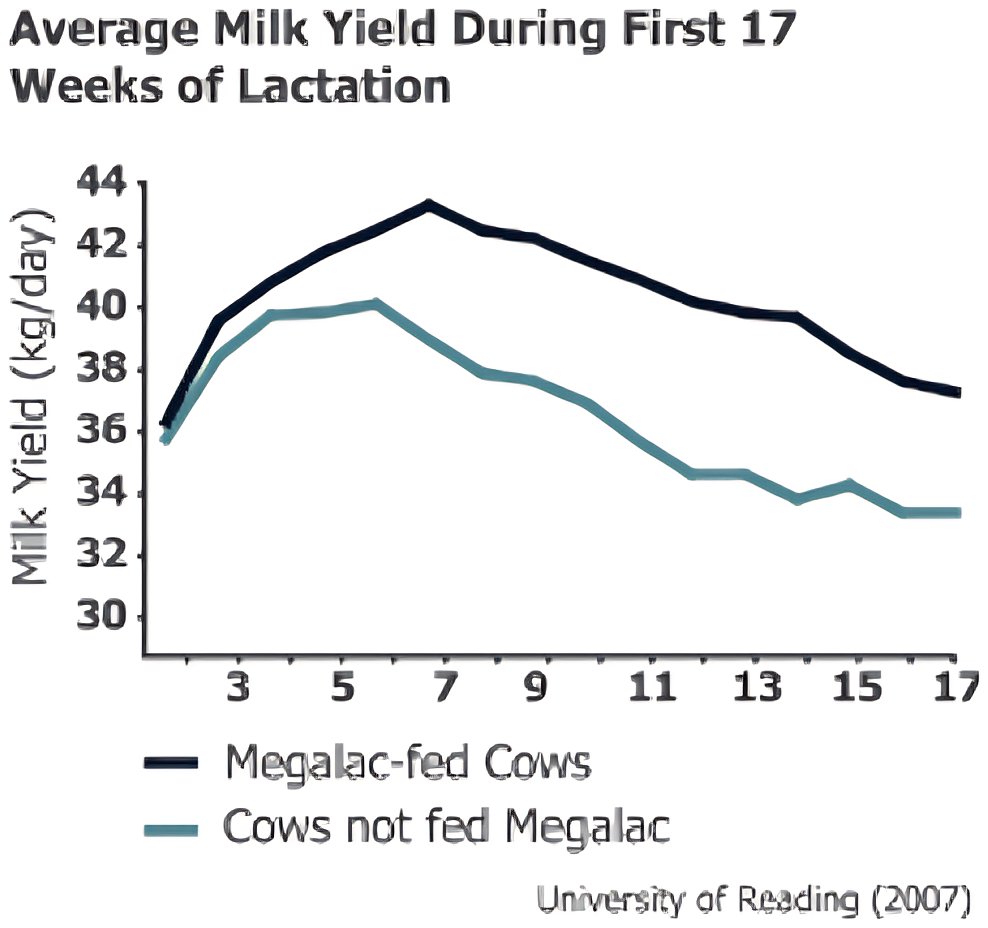
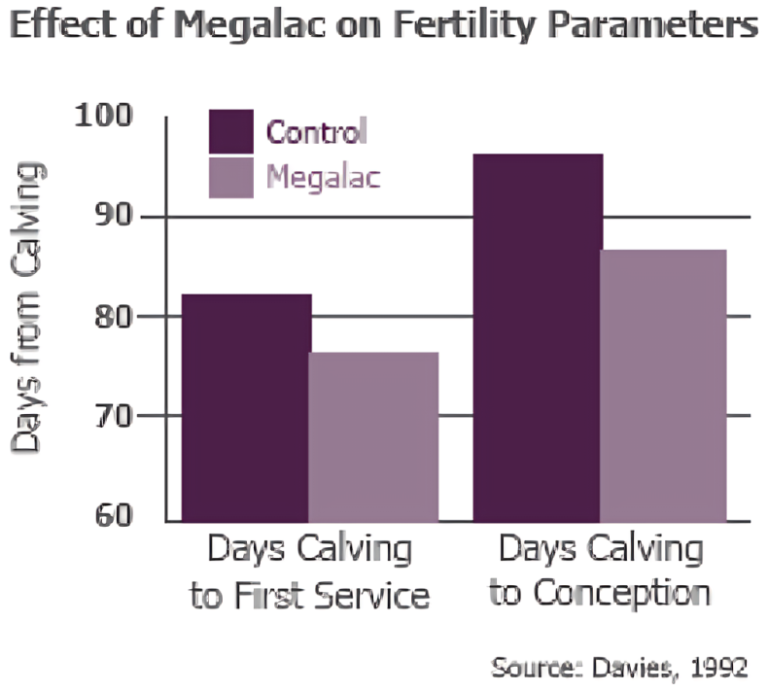
Megalac Improves Fertility
A cow will on average be in the herd for just over 3 lactations (Milk Development Council, 2000). Most culling decisions are down to poor fertility or reproductive problems.
With the daily cost of failing to get a cow back in calf estimated at £3 (Beever, 2004), the impact on performance and profitability is clear. Cows that do not consume enough energy will lose body weight and may not get back in calf, or may take longer to return to oestrus.
Davies (1992) reported that feeding cows Megalac reduced both the calving to first service interval, and the number of days from calving to conception.


